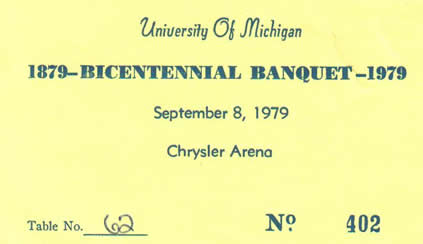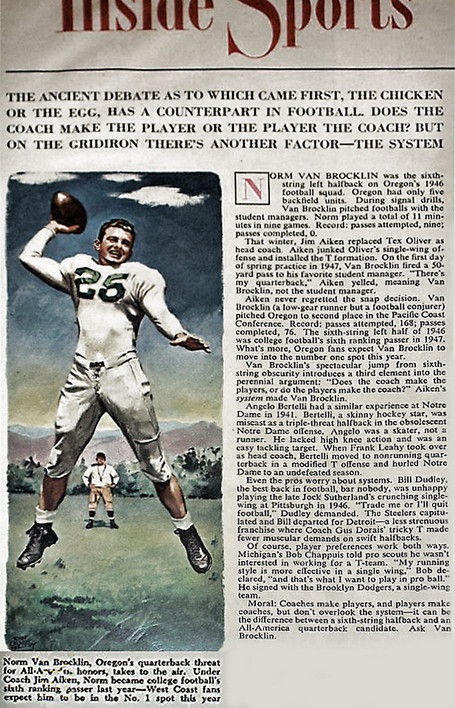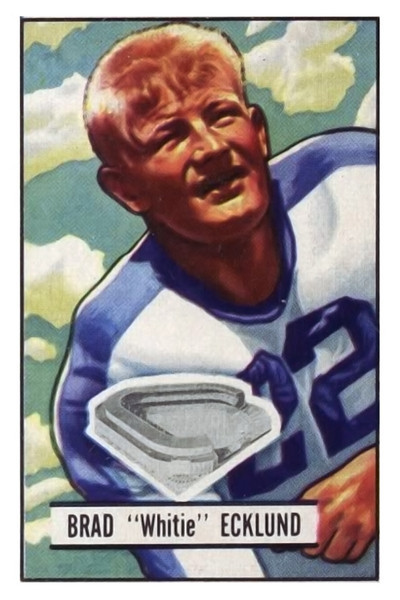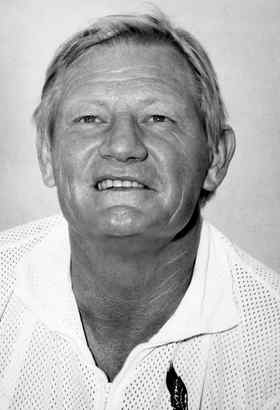why I love the internet, part 1

No, it has nothing to do with Oregon. But Michigan is a great educational institution. (H/T: MVictors)
Your donations keep Duck Downs ad-free and eliminate the need for wasteful popup blockers!

No, it has nothing to do with Oregon. But Michigan is a great educational institution. (H/T: MVictors)
(Originally posted 7/11/10 on Addicted to Quack) As the reader may have inferred by now. I like looking back as much as anyone — probably more than most. But my favorite team is always the one I’m looking forward to seeing this fall. Just like last year, and the year before that. We’re in a golden age right now, as far as Our National Obsession is concerned. I didn’t realize it at the time, but it must have really sucked to be a college football fan in 1985. (I pick ‘85 because anybody old enough to have been a fan in ‘85 will, like me, likely be sitting in his rocking office chair quietly issuing affirmations between hits of Metamucil. Since most of the rest of you don’t go back much farther than The Pick, if you’re being honest, 25 years or so is a nice generational timespan for reflection. And in many ways, 1985 wasn’t a lot different than 1960, so it’s a reasonable proxy.) BYU was the defending national champion. That’s a good place to start. OK, enough of that. Division 1-A was beginning to show signs of parity not seen since the pre-WWII era. In contrast with the 70s, when “That Old Gang of Nine” — Oklahoma, ‘Bama, Michigan, Nebraska, USC, tOSU, ND, Texas and Penn State — dominated the polls and provided a decade of boring elitist football, a number of semi-traditional powers had begun asserting themselves by the mid-80s. Florida went from winless in ‘79 to SEC champs in ‘84 to probation in ‘85. SMU was in its pre-death-penalty heyday as the dominant program in Texas. Iowa was competitive in the Big10, Maryland in the ACC, and Washington was the dominant program in the Pac-10 with USC on probation. Notre Dame’s death spiral had commenced under Gerry Faust. The SEC was in the midst of a national championship drought that went from 1980 (Georgia) to 1992 (Bama). “The U” dominated football in the South for a decade.
The extent of Oregon’s 1985 prospects were summed up in the SI preview issue:
The Quack Attack is back at Oregon, where a full house returns in the backfield, including tailback Tony Cherry, who averaged 6.5 yards per carry in 1984. Who knows? The routinely ugly Ducklings could finish in the upper division.
(They didn’t.)
Nationally, the sport was mixing itself up. Parity had arrived, thanks in large part to scholarship limits that kept the big boys from putting 50 players on a free ride every year.
But in 1985, hardly anyone could get in on the fun.
The NCAA for decades held a stranglehold on televised games — only allowing eight nationally televised games per year, along with five regional games, to be broadcast on the major TV networks during the season. With so few games broadcast, it was unusual to see anything unusual. But in 1985, a year after the Supreme Court ended the NCAA scheduling monopoly, the College Football Association — essentially, Division 1-A minus the Big10 and Pac-10 — took over de facto control of broadcast rights. The CFA hooked up with ABC; the Not-CFA went to CBS. Cable channels, like the young but growing ESPN, picked up the CFA scraps.
Not many of those scraps were fed to Pac-10 fans. Admittedly, the Pac kind of stank in ‘85, with only one team in the national top 5 all year — USC, for just two weeks in September — so we weren’t missing much. The league was still shaking off the dust from the probation years. Although Washington finished #2 in 1984, the only ranked team at the end of ‘85 was #7 UCLA.
Regardless, Tom Hansen didn’t exactly assert himself as a rookie commish of the conference when it came to TV exposure. (Some things never change.) And you hardly ever saw a TV game with Pac-10 teams, unless it was USC vs Notre Dame, which managed to get on the air every year.
A typical 1985 TV game schedule looked like this one, from October 19, if you lived in Eugene:
That’s all, folks. This was viewed as an improvement. (In 1977, Oregon’s game at Stanford was on ABC. It was the *only* college football game seen in Eugene that day, on any channel.)
Still, the new broadcast arrangements at least made it possible for games to be “telecast” regionally. But even games that were “on TV” wouldn’t necessarily make it onto *your* TV. Reason? Blackouts.
In 1985, Oregon’s first game — a late August date at WSU — was televised nationally on WTBS. That was the only TV appearance within the state of Oregon for the Ducks all season. A September game at Autzen against Stanford was televised.. in Northern California, for Stanford’s benefit. It was broadcast on the Bay Area station KTVU, a channel carried on cable systems in Oregon, but the game was blacked out north of the border. Nobody wanted to jeopardize the gate back in the day, and with good reason; a team as numbingly average as Oregon was in the 1980s couldn’t expect to come close to selling out home games. The ‘84 team that went 6-5 didn’t attract more than 30,000 all year. Why give folks another reason to stay home?
If you wanted to see Oregon play, you needed to get your ass to a game. (You could occasionally catch a rebroadcast of a game; when Oregon tied Notre Dame in ‘82, the game was replayed on ESPN four times over the next two days [note: anyone who has this game recorded on VHS, *please* contact me]. The not-yet-World-Wide-Leader didn’t have a lot of programming depth back then, giving fans plenty of time to figure out how to program their Betamax.)
Polls? There was no “ESPN USA Today Top 25”, or any other Top 25. There was an AP Top 20, and a UPI Top 20, UPI being the “coaches” poll. The polls came out on Monday. Teams not making the top 20 were typically listed as “Others receiving votes, listed alphabetically”; you never knew, or cared, who was ranked #21.
If there was anything like sports talk radio in 1985, it hadn’t yet reached Oregon. Stations that broadcast the games would have pre-game and post-game call-ins, but nothing like the multiple 24-hour jock talk we have now.
Interested in recruiting? You could sign up with Joe Terranova and receive a mimeographed newsletter via mail, or subscribe to Max Emfinger’s “National High School Football Magazine”. Or make friends with the coaching staff. Otherwise, you had to wait until the local papers reported on your favorite school’s news conference on signing day.
As for post-season play, there wasn’t much of it. Teams had to earn their bowl bids through a combination of reputation, ass-kissing, under-the-table largesse, and sometimes actual field results. Lots of decent teams were left home when we had only 15 bowl games. The only bowls worth watching were the New Years Day games — Rose, Fiesta, Cotton, Sugar and Orange. All of which were played on New Years Day. You usually had to choose between pairs of games — on 1/1/86, you could watch the Fiesta or the Cotton at 10:30, the Rose unencumbered at 1:30, then flip between the Orange and the Sugar while you ate leftover pizza from New Years Eve for dinner, washed down with Miller Lite. If you were really techno-savvy, you had one of them “PIP” TVs that let you watch one game in a little corner of your 27” Trinitron while the other game filled the screen. More likely, you taped one game and watched the other one live.
Video games? Madden wasn’t even conceived until ‘86, and didn’t make it onto a platform until “John Madden Football” was released for the Apple II in ‘89. All we had in ‘85 were titles like “Superbowl Sunday” for the C-64, and some 8-bit pixellated crap on the Atari, if it still worked after all that bongwater you spilled on it. There was no college format game until Micro Sports released “All-American College Football” for DOS in 1991.
If you wanted games, you could play Strat-o-Matic football on the floor in your bedroom. Or haul that Electric Football game out of the closet and try to make your “quarterback” hurl that little felt “football” anywhere near your “receiver” as he slid down the vibrating metal field. Or fold up a piece of notebook paper and play Table Football in the library. Or go outside and throw a ball around.
Don’t let your parents kid you. The good old days weren’t all that good.
If, these days, it seems we have too much of a good thing, with 60+ teams in bowl games, wall-to-wall coverage from Thursday night until Saturday night, myriad web sites to dissect things before during and after, updates of recruiting status available instantly via Twitter.. well, at least it’s a good thing that there is too much of.
So, enjoy your nostalgia. It’s best served when it’s kept warm, right?
In 2007, some experts posited that Dennis Dixon’s remarkable progress was more a function of Chip Kelly’s offensive system than anything else. Kelly had made DD a “system quarterback.” Thus implying that Dixon wasn’t really that good. In 2010, the experts were at it again, late in the season, suggesting that LaMichael James’ Heisman campaign maybe wasn’t quite legitimate because he gained his yardage on opportunities given him within Chip Kelly’s offensive system. He was a “system running back”. Thus implying that LMJ wasn’t really that good. This argument is nothing new. Really. And fans of DD and LaMike shouldn’t be too upset by it. Because one of Dixon’s predecessors had the same argument made against him, almost 60 years earlier. “Aiken’s system made Van Brocklin”. The Dutchman went on to a Hall of Fame pro career. Some system.
Collier’s Magazine article, Sept 1948, by Bill Fay; illustration by John Cullen Murphy.
(ed note: H/T to UniWatch for the link. Greetings, Unique Visitors!)
Traditionally in college football, a new head coach has the prerogative to alter his team’s on-field appearance. For Oregon, this tradition held sway until the Bellotti era and the increased influence of Nike in the team’s uniform design beginning in 1997, leading to the now-famous Three Year Uniform Complaint Reload.
It is inaccurate to say, however, that Oregon’s livery maintained a Penn State type of consistency in the pre-Bellotti era. It wasn’t all “Donald Duck”; in fact, Donald’s presence on the uniform itself was a historically recent (1984) phenomenon. But there were enough significant changes in the uniforms between the early 1950s and the late 90s to merit a review. (For all we know, Penn State might have changed its uniforms a few times on coaching changes, if they ever actually got around to changing coaches.)
Len Casanova may have been an innovator, but college football was as hide-bound as anything in the 1950s. The Duck uniforms were as mundane as any you’d see of the time, with Green Bay Gold helmets bearing a single green stripe, white jerseys with green block letters and three green upper arm stripes (away) and Kelly Green jerseys with white and gold stripes (home), in both cases wearing gold pants.
Cas made his first and only major uniform revision for the 1956 season, adding multicolor arm stripes to home and away jerseys, enlarging the numbers and edging them in white on the home jerseys. The home unis were relatively unadorned, with block “Green Bay Gold” letters lined with white on Kelly Green, gold pants with two thin green side stripes, and gold helmets (home and away) that for several years bore player numbers.
Mel Renfro, 1962
(Color photos of home games during the Cas years are difficult to come by, hence the necessity of colorizing Mr. Mel Renfro in his 1962 livery on Media Day.)
The road whites featured a “UCLA shoulder loop,” a feature that was popularized by Red Sanders with his UCLA teams in the mid-50s. For Oregon, a thin green stripe bordered a thicker solid middle yellow stripe on each side. The shoulder loop was a very noticeable feature on the jersey that helped Coach Sanders decipher his Bruins on the grainy black and white game films of the time. This look was eventually adopted by several college teams as well as some pros — the. Vikings, Colts, Chargers(w/center bolt), Patriots, 49ers, NY Titans, and Rams. (H/T: GreenGlare)
This look could have made Jack Crabtree, QB of the ‘58 Rose Bowl team, feel right at home at the game, except for the fact that UCLA didn’t start playing its home games in Pasadena until 1982.
Jack Crabtree, 1958, in the 2006 Rose Bowl vs Texas and USC
In ‘63 a white stripe edged in green replaced the single green helmet stripe. This was the last significant uniform change until Jerry Frei took over as coach in ‘67.
**
Ten years, four head coaches, four athletic directors, two stadiums.. why wouldn’t you mix up the uniforms as well?
Jerry Frei started his career by changing around the hats. In ‘67 the team sported an interlocking “UO”, in gold lined with white, on a solid green helmet, with an oddly generic and un-footballish font that resembles Futura Bold.
Tom Blanchard with Jerry Frei, 1967
In ‘68, Frei jazzed up the uniforms, adding numbers to the sleeves and moving the sleeve stripes on the road jerseys down the arm. The helmet decal changed to a somewhat morphed block “U-O” with green letters edged in gold on a white oval background.
George Dames, vs tOSU, 1968
 In 1969 there was another helmet change, the last under Frei, with “U-O” now in the familiar interlocked Block-U style, unlined gold on green.
In 1969 there was another helmet change, the last under Frei, with “U-O” now in the familiar interlocked Block-U style, unlined gold on green.
The artist formerly known as Bobby Moore, 1971
(now the famous softball thrower, Ahmad Rashad)
Note how green the overall combination looks. The pant stripes, changed to a green-white-green look, promised a level of Green Bay Packer-style distinction that the team never was quite able to deliver.
This uniform combination was retained until Frei wasn’t.
The green helmets didn’t return until 1999.
Not much happened during the tenures of Dick Enright and Don Read, other than a certain uniformity.
Enright implemented a retro look in 1972, moving back to the Casanova-era gold helmet with green and white Packer-style central stripe and no logo, and dropping the arm numbers from the road jerseys. Which was probably just as well, considering how poorly the team played; why call attention to yourself or your affiliation when you suck?
Mike Anderson vs Oklahoma, 1972
Read replaced the road arm numbers for 1976, for no obvious reason, but this was the only visible change in Oregon’s uniforms during a period of consistent sub-mediocrity.
Brooks immediately re-added Frei’s Block-U style interlocking “U-O” to the helmets in ‘77, while keeping the EnRead design. In 1978, the gray masks were changed to Green Bay Gold to match the helmets.
This look was maintained with only one significant tweak through the Brooks tenure — the move of the sleeve numbers to the shoulder, to make room for the “Donald Duck- through-the-O” logo, in 1985.
On promotion to HC after Brooks bolted for the pros, Mike Bellotti finally had a chance to fulfill his lifelong dream.. of eliminating stripes from his team’s uniforms.
Gone were the helmet stripes, arm bands, and leg stripes. The helmet decals and Donald-O sleeve logos remained, giving the team a very clean and professional look that would be retained for all of four years, when Nike took over uniform design.
This combination was the basis for the “throwback” unis worn against Cal and OSU in 2009, minus the Donald and with the modern “O” helmet decal. The choice of white and green jerseys, and yellow and green pants, meant fans could experience a whopping four different uniform combinations.
My favorite Duck uni of all time, especially this home version.
Tony Graziani, 1995
***
In 1999, the new Nike-designed multistripe uniforms, with the introduction of multiple shades of green, were unveiled, and the rest — four complete makeovers in 10 years — is history.
Personally, I’d like to see them bring out an early-70s throwback, with green jerseys and hats and the Packer stripes, but I’m not holding my breath.
(Many thanks to Helmet Hut, which is not only a great source for authentic reproductions of period helmets but offers a surprisingly comprehensive look at the history of a number of CFB teams.)
Brad “Whitie” Ecklund was a Milwaukie native, an Oregon all-star, bulwark of the 1948 Cotton Bowl offense, two time Pro Bowl center in the NFL, and assistant coach for five NFL teams over 20 years.
Whitie was a big man for his time, around 6’4, and weighed 225. The New York Times called him a “mighty oak.” A writer for the Chicago Tribune said he combined “the bulk and walk and look of John Wayne with the voice and manner of Chill Wills.”
And, from the time he first laced up the cleats at Milwaukie High for the freshman team in 1937, until his last appearance as a Duck in the ‘49 Cotton Bowl, he started every game he played as an amateur.
That’s 91 straight games.
Ecklund is broadly considered the greatest center in Oregon football history (sorry, Max Unger, but you weren’t a four-year starter at center). And it’s unfortunate that he’s almost unknown now.
The Oregonian and R-G each had a perfunctory obit for Brad Ecklund, but nothing worthy of a player of his literal and figurative stature. So, here’s a look at the career and life of one tough SOB.
 Ecklund’s 1951 Bowman football card, courtesy Benzduck’s personal collection
Ecklund’s 1951 Bowman football card, courtesy Benzduck’s personal collection
As a senior in high school at Milwaukie, “Whitie” was named to the Metro all-star team at fullback. He was a four-sport star — baseball, track, basketball and football — and was drafted by the Philadelphia Athletics, but turned down baseball for a full ride at Oregon.
He never played for a team — frosh, varsity, military or Oregon — that he wasn’t named captain of.
And he never played in a league where he wasn’t named on the all-conference team — at fullback in high school, at center on the military teams and at Oregon.
Ecklund matriculated at Oregon in 1941, expecting to play fullback. But the Webfoots were loaded in the backfield, and weak up front. Coach Tex Oliver looked at the massive Ecklund and moved him to center on offense during fall camp; he played linebacker on defense. By the first game, at Stanford, he was first string. He started every game.. but flunked out of school.
Just in time, WW2 intervened. Ecklund joined the Marine Corps, and took up boxing for fun. Naturally, he became the Marine Corps Golden Glove champion. He played for the Navy Pre-Flight football team in Jacksonville, Florida for two years before being dispatched for overseas duty at Okinawa.
He learned what it meant to be a member of team in the South Pacific, fighting in interminable battles from island to island. “I was in the second wave,” he told the R-G’s Bob Clark in a 1993 interview. “It was the guys in the first wave who got their butts shot up.” Ecklund thought the fact that the late-40s Oregon players had all gone to war made them a more dedicated and mature unit with a special bond and a more businesslike attitude to the game.
The man one sportswriter called “the indestructible giant” returned to Oregon in ‘46, and picked up where he left off.
By being four years in the service, they forgave me for flunking out … When I came back, I never made less than a B average. I’d matured and realized what I almost lost.
In the next three years, playing both sides of the line, he averaged over fifty minutes per game. He was All-PCC in ‘46, ‘47 and ‘48. On that great ‘48 team, Ecklund played all 60 minutes of five games — Stanford, USC, Michigan, St Mary’s and Washington — and was only knocked out of one game all year, when an Idaho player kicked him in the head 4 minutes into the 3rd quarter. He graduated in 1949 with degrees in health and physical education.
He passed up a contract offer from the Green Bay Packers, choosing to join the upstart All-America Football Conference’s New York Yankees for more money. He stayed with the franchise as it moved from New York to Dallas, then signed with the NFL’s Baltimore Colts. In 1953, Ecklund was named the most valuable offensive lineman of the Colts, an honor for which he received all of $100. Having achieved that career milestone, he quit the team and returned to Oregon to coach high school football.
 Brad Ecklund, Eagles assistant coach in the 1970s, via media.philly.comEcklund was an assistant to Len Casanova’s late-50s Oregon teams, then jumped to the NFL in 1960, where Tom Landry gave him his first coaching gig with the new Dallas Cowboys. He moved to the new Atlanta team in 1966, where he coached under his former teammate Norm Van Brocklin, and later coached at New Orleans, Philadelphia and Chicago.Ecklund retired from coaching in 1979, and spent most of the rest of his working life as a substitute teacher in the Philadelphia area.. always keeping his teaching certificate active in the states his children lived in, so he could stay close to his grandkids.
Brad Ecklund, Eagles assistant coach in the 1970s, via media.philly.comEcklund was an assistant to Len Casanova’s late-50s Oregon teams, then jumped to the NFL in 1960, where Tom Landry gave him his first coaching gig with the new Dallas Cowboys. He moved to the new Atlanta team in 1966, where he coached under his former teammate Norm Van Brocklin, and later coached at New Orleans, Philadelphia and Chicago.Ecklund retired from coaching in 1979, and spent most of the rest of his working life as a substitute teacher in the Philadelphia area.. always keeping his teaching certificate active in the states his children lived in, so he could stay close to his grandkids.
In 1999, Brad Ecklund was named University of Oregon “Lineman of the Century.”
He’s a charter member of the Oregon Sports Hall of Fame.
Here’s to you, Whitie. Wherever you are, keep snappin’.